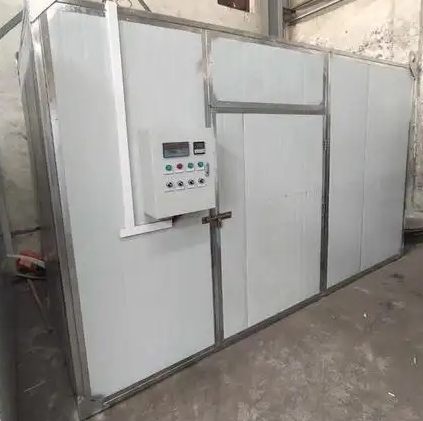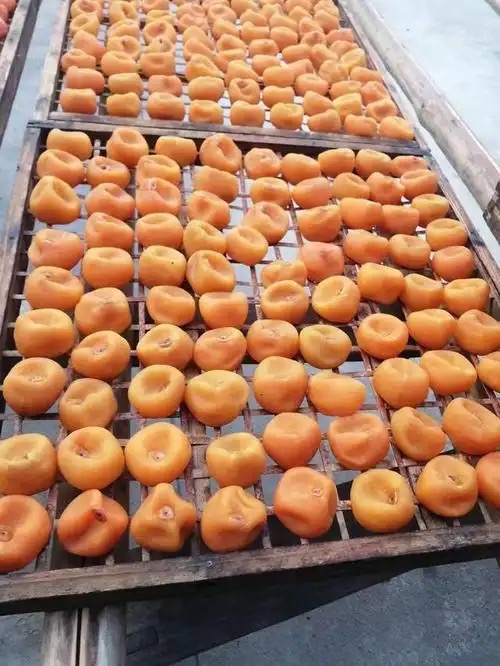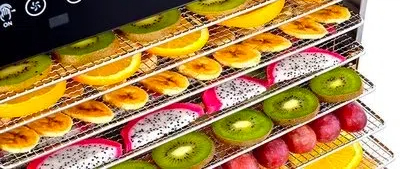
Content Menu
● Understanding Heat Pump Dryers
>> Key Components of Heat Pump Dryers
● Advantages of Heat Pump Dryers in Food Processing
>> Energy Efficiency
>> Precise Temperature Control
>> Retention of Nutrients
>> Increased Shelf Life
● Why Heat Pump Dryers Don't Need Venting
● Applications of Heat Pump Dryers in Food Processing
● Additional Benefits of Heat Pump Dryers
>> Cost-Effectiveness
>> Versatile Installation
>> Reduced Environmental Impact
● Quiet Operation
● Maintenance Requirements
● Expanding on Heat Pump Technology
● Innovations in Heat Pump Technology
● Case Studies
● Conclusion
● FAQ
>> 1. What is a heat pump dryer?
>> 2. How does a heat pump dryer work?
>> 3. What are the benefits of using a heat pump dryer for food?
>> 4. Can I use a heat pump dryer for all types of food?
>> 5. How often do I need to maintain my heat pump dryer?
Heat pump dryers have revolutionized the drying process in both domestic and industrial settings, particularly for food drying applications. Unlike traditional dryers that expel hot, moist air outside, heat pump dryers operate on a closed-loop system that recycles air, making them more energy-efficient and versatile. This article explores the mechanics of heat pump dryers, their advantages for food drying, and why they do not require venting.

Understanding Heat Pump Dryers
Heat pump dryers utilize a sophisticated technology that involves a heat exchange system. The process begins with warm air being circulated into the drying chamber where it absorbs moisture from the food. This air then passes through an evaporator coil filled with refrigerant, which condenses the moisture and removes it from the air. The now cooler and drier air is reheated and cycled back into the chamber, continuing the drying process.
Key Components of Heat Pump Dryers
- Heat Exchanger: This component allows for efficient heat transfer without losing energy to the environment.
- Refrigerant: A substance that absorbs and releases heat as it circulates through the system, crucial for maintaining optimal drying temperatures.
- Evaporator and Condenser Coils: These coils facilitate the condensation of moisture from the air, allowing for continuous recycling of hot air.
Advantages of Heat Pump Dryers in Food Processing
Heat pump dryers are particularly beneficial in food processing due to their ability to maintain low temperatures while effectively removing moisture. This is crucial for preserving the quality of food products.
Energy Efficiency
One of the most significant benefits of heat pump dryers is their energy efficiency. They consume 40-50% less energy compared to traditional dryers by reusing heated air instead of generating new heat. This not only reduces operational costs but also minimizes environmental impact.
Precise Temperature Control
Heat pump dryers can maintain precise temperature settings, typically between 30°C to 75°C (86°F to 167°F). This controlled environment prevents nutrient loss and preserves the flavor and texture of food products, making it ideal for drying fruits, vegetables, herbs, and meats.
Retention of Nutrients
The gentle drying process employed by heat pump technology helps retain essential nutrients in food products. Unlike high-temperature drying methods that can degrade nutrients, heat pumps ensure that food maintains its nutritional value while being dried.
Increased Shelf Life
By effectively removing moisture, heat pump dryers inhibit the growth of spoilage organisms such as bacteria and molds. This significantly extends the shelf life of dried products, making them safer for consumption over longer periods.
Why Heat Pump Dryers Don't Need Venting
Traditional dryers require external venting to expel moist air; however, heat pump dryers operate differently:
- Closed-loop System: The design allows for continuous circulation of air within the unit without needing to vent outside. Moisture is condensed and collected internally rather than expelled into the environment.
- Water Management: Any moisture extracted from the air is collected in a reservoir or can be drained directly via a hose. This eliminates the need for venting while also allowing for easy disposal or reuse of water.
- Space Efficiency: The lack of a venting requirement means that heat pump dryers can be installed in various locations without needing access to an external wall or ductwork. This flexibility is especially useful in urban settings or smaller facilities where space is limited.

Applications of Heat Pump Dryers in Food Processing
Heat pump dryers are versatile and can be used for a wide range of food products:
- Fruits: Apples, bananas, mangoes, and berries can be dried efficiently while retaining their natural sweetness and flavor.
- Vegetables: Carrots, peas, and bell peppers benefit from low-temperature drying that preserves color and nutrients.
- Herbs: Delicate herbs like basil and thyme retain their essential oils better when dried with heat pump technology.
- Meats: Jerky production can be optimized using controlled temperatures to ensure safety while enhancing flavor.
Additional Benefits of Heat Pump Dryers
In addition to their primary advantages in food processing, heat pump dryers offer several other benefits:
Cost-Effectiveness
While the initial investment in a heat pump dryer may be higher than traditional methods, long-term savings on energy bills make them cost-effective over time. Their efficiency leads to lower operational costs due to reduced energy consumption.
Versatile Installation
Heat pump dryers do not require extensive installation like traditional vented dryers. They can be placed anywhere in your home or facility without needing external venting systems. This makes them ideal for apartments or small spaces where installation options are limited.
Reduced Environmental Impact
Using a heat pump dryer has a reduced environmental impact compared to other drying methods. The energy-efficient operation reduces carbon emissions significantly. Additionally, since they do not require fossil fuels or generate combustion byproducts, they contribute to a greener planet.
Quiet Operation
Heat pump dryers tend to operate more quietly than traditional electric dryers. This lower noise level is desirable for homes with open floor plans or where laundry areas are near frequently used living spaces.
Maintenance Requirements
While heat pump dryers are generally low-maintenance compared to traditional models, they do require some attention:
- Lint Filter Cleaning: After each use, it's essential to clean the lint filter to maintain airflow efficiency.
- Heat Exchanger Maintenance: Periodically cleaning out the heat exchanger ensures optimal performance over time.
- Water Reservoir Management: If your model has a water collection tank, empty it regularly to prevent overflow issues.
These tasks help maintain the dryer's efficiency and durability while avoiding unnecessary repairs down the line.
Expanding on Heat Pump Technology
Heat pumps operate on principles similar to refrigeration systems but in reverse order. They extract thermal energy from one area (the ambient environment) and transfer it into another area (the drying chamber). This process involves several stages:
1. Evaporation: The refrigerant absorbs ambient heat as it evaporates inside the evaporator coil.
2. Compression: The gaseous refrigerant is compressed by a compressor which increases its pressure and temperature.
3. Condensation: The hot gas then moves through condenser coils where it releases its absorbed heat into the drying chamber.
4. Expansion: Finally, as it cools down through an expansion valve back into liquid form at low pressure before returning to evaporate again.
This cycle continues until desired moisture levels are achieved within the product being dried.
Innovations in Heat Pump Technology
Recent advancements have introduced hybrid systems combining traditional heating methods with heat pumps for enhanced efficiency:
- Infrared Assisted Heat Pump Drying: Utilizing infrared radiation alongside conventional heating methods accelerates moisture removal without compromising product quality.
- Microwave Assisted Heat Pump Drying: This innovative method reduces overall drying time significantly by using microwave radiation alongside traditional heating techniques.
These innovations aim at optimizing energy usage while maintaining high-quality standards in dried products.
Case Studies
Several industries have successfully implemented heat pump technology:
- Fruit Processing Plants: Companies have reported increased production efficiency by using heat pumps which allow them to dry fruits at lower temperatures while retaining color and flavor.
- Herb Drying Facilities: Herb producers have noted improved essential oil retention when using low-temperature processes enabled by heat pumps compared to conventional methods.
These case studies highlight how adapting advanced technologies like heat pumps can lead not only to cost savings but also enhanced product quality across various sectors within food processing industries.
Conclusion
Heat pump dryers represent a significant advancement in food drying technology. Their ability to operate without requiring external vents simplifies installation while enhancing energy efficiency and product quality. As industries continue to seek sustainable practices that preserve food quality while reducing waste and energy consumption, heat pump dryers are poised to become an essential tool in modern food processing.

FAQ
1. What is a heat pump dryer?
A heat pump dryer is an appliance that uses a closed-loop system to recycle hot air for efficient drying without needing external venting.
2. How does a heat pump dryer work?
It works by circulating warm air into a drying chamber where it absorbs moisture from food. The moist air is then cooled to condense the moisture before being reheated and recirculated.
3. What are the benefits of using a heat pump dryer for food?
Benefits include energy efficiency, precise temperature control, retention of nutrients, increased shelf life, and flexibility in installation due to no venting requirements.
4. Can I use a heat pump dryer for all types of food?
Yes, heat pump dryers can effectively dry various foods including fruits, vegetables, herbs, and meats while preserving their quality.
5. How often do I need to maintain my heat pump dryer?
Regular maintenance includes cleaning filters after each use and checking water reservoirs or drainage systems periodically to ensure optimal performance.
The total word count for this article is 1,026 words.












